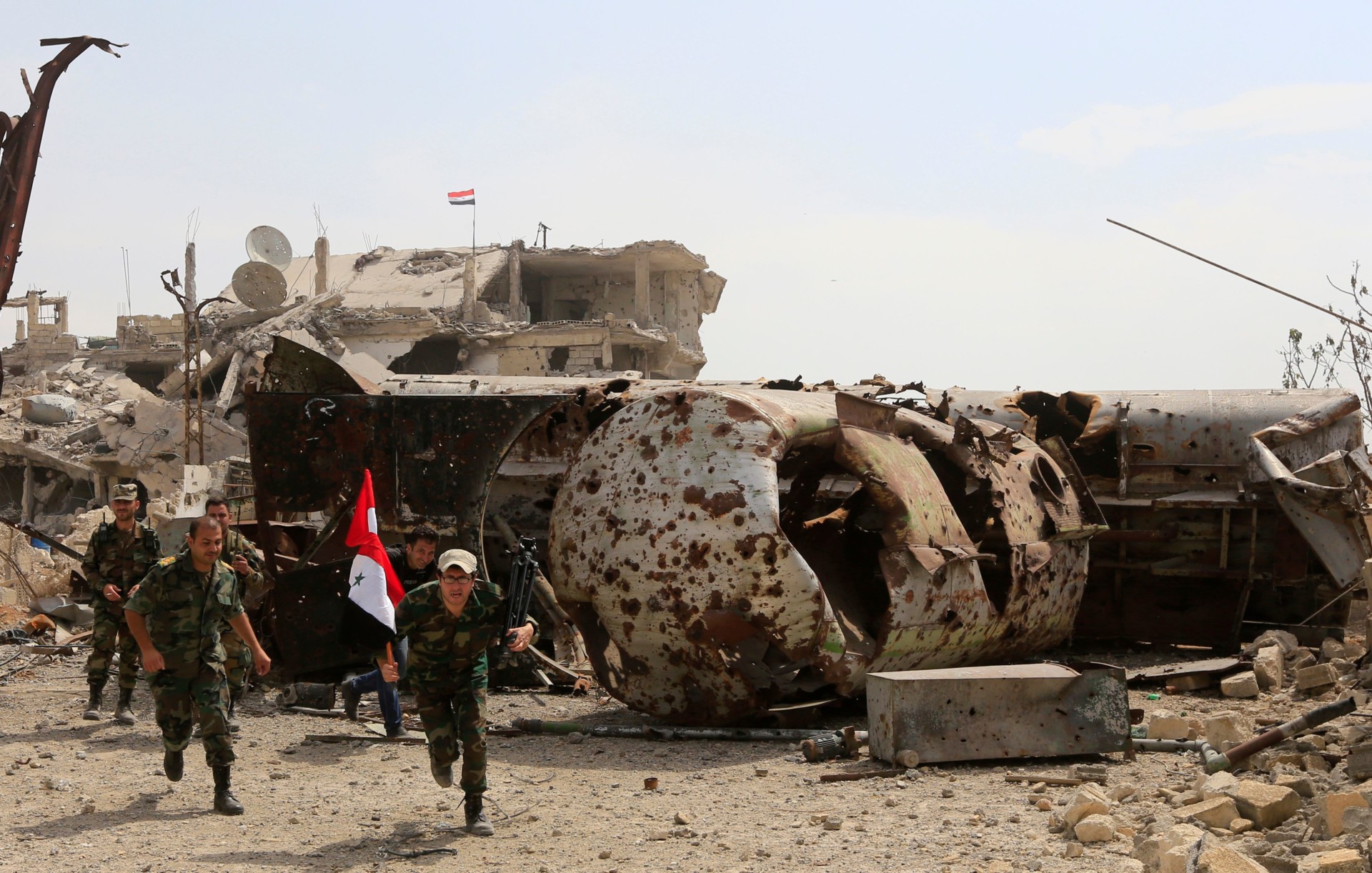Editor’s Note: This Net Assessment is part seven of “ISIS 2020” – a series of briefings about the current status of the Islamic State by authors from different parts of the region. It is published by the Newlines Institute‘s Nonstate Actors program. Parts one, two three, four, five, and six were released on April 28, May 5, May 12, May 19, May 26, and June 2, respectively.
Every once in a while, a think piece emerges in the realm of commentary on current trends in global jihadism that speculates on the possibility of the Islamic State and al Qaeda joining forces in some way. A recent example was a piece that raised the idea of “sustained cooperation” between the two groups, highlighting reports from late February that suggested the two groups were working together in the Sahel region in West Africa. A merger or lasting unification of efforts between the two groups would of course have negative implications for policymakers, particularly as they face an overall deteriorating security situation in West Africa. It is therefore somewhat of a relief that the notion of sustained cooperation or any lasting alliance between the two groups can definitively be laid to rest.
Any instances of cooperation that do emerge are temporary, because ISIS seeks to undermine the influence of other jihadist groups, which are inevitably accused of betraying the Islamic State. This scenario has played out multiple times since the official emergence of the Islamic State’s predecessor organization in Syria back in 2013.
Irreconcilable Differences
When the case has been made for the prospect of unification or sustained cooperation between ISIS and al Qaeda, one of the arguments has been that the difference between the two groups is only one of strategy for attaining the identical end goal of a caliphate, and thus can be easily overcome. However, the disagreement in strategy is tied to disagreements over ideology and leadership that will remain unchanged so long as ISIS continues to make the claim that it is the Caliphate, a position that did not change with the death of Abu Bakr al-Baghdadi. For the Islamic State, al Qaeda’s strategy–such as the supposed importance of winning a popular support base to establish the rule of God’s law– is evidence of the group’s deviation from the authentic ideology and path. In ISIS’s view, this decline is tied to the death of Osama bin Laden and Ayman al-Zawahiri’s assumption of the leadership of al Qaeda.
There is no evidence that these positions have changed within the Islamic State. In fact, they have been reinforced recently in the group’s propaganda. ISIS’s affiliate in Yemen released a video around 52 and a half minutes long touted as a “documentary shedding light on the deviation of the al Qaeda organization after what was known as the revolutions of the Arab Spring.” The documentary cites various examples from around the Muslim world of evidence of the supposed deviation of al Qaeda and its affiliates.
For instance, the documentary criticizes al-Zawahiri’s directives to the jihadists in Tunisia about not targeting the governments that arose after the revolution but instead offering the hand of cooperation to establish the rule of shariah and to liberate Muslim lands such as Palestine. The documentary also criticizes al-Zawahiri’s directives about not targeting the Tunisian army and security forces except in self-defense. For context, the Tunisia experience is well known to the followers of jihadist trends for the emergence of the Ansar al-Shariah movement after the fall of the Ben Ali regime. This movement, rather than focusing on violence, initially worked to spread jihadist ideals through proselytization, though many of its members subsequently went to fight in Syria and the Tunisian government eventually banned the movement for the problems it created.
For the Islamic State, the point in highlighting al-Zawahiri’s directives on Tunisia is that the error from the outset was that the jihadists did not seize the chance created by the Tunisian revolution to take power by force and impose an Islamist government. This line of criticism in the documentary is not new but echoes sentiments found in a lengthy internal history textbook that ISIS issued under the imprint of its education department titled, “Stations and Lessons from the Sira and History,” which this author has been examining as part of his doctoral studies.
The documentary features other familiar Islamic State talking points against al Qaeda, such as the alliances Jabhat al-Nusra (the al Qaeda branch in Syria that split off and became Hayat Tahrir al-Shaam) struck up with “apostate” factions to fight the Islamic State in Syria. The video also talks about al Qaeda’s reluctance to implement Shariah swiftly and thoroughly in places such as northern Mali and Mukalla in Yemen. There is no sign that recent developments have bridged any of these gaps.
Cooperation and Competition in the Sahel
The apparent exception of the Sahel region in terms of cooperation between the two groups has also proved to be illusory. The recent issue 233 of the Islamic State’s weekly newsletter al-Naba features an article on the losses French forces are experiencing, while al Qaeda is accused of “participating in the war against the mujahideen.” In the report, the organization is derided in a section as the “Base of War Against Jihad” (a play on al Qaeda’s longer name of “Qaedat al-Jihad,” which means “The Base of Jihad”), as it is accused of “conciliating with the apostates and waging war on the mujahideen.” The article elaborates:
Amid this Crusader war begun against the soldiers of the Caliphate, the militias of the Base of Apostasy have also not wasted the opportunity to betray the soldiers of the Caliphate and begin their war against them, as they have constantly been striving to find appropriate opportunities to beat their drum and mobilize their soldiers to shed their blood in fighting those they call the ‘renegade Khawarij’!
For context, the “Base of Apostasy” is another play on al-Qaeda’s full name, and illustrates ISIS’ ongoing declaration of al-Qaeda to be disbelievers. As for the designation of ‘Khawarij’, this is a common term used by al-Qaeda and other Sunni Muslim critics of ISIS who view the group as too extreme, referring to the Khawarij trend that emerged in the early history of Islam. The article then goes on to document various clashes that have occurred between al Qaeda and ISIS in the Sahel.
While it might be tempting to dismiss this media output, the Islamic State values the communication of its propaganda to its members, as shown by multiple media releases in the past that have featured distributions of the al-Naba newsletter to fighters and the display of video releases to the fighters. These recent media items show that there is an ongoing vigorous effort by the leadership to make sure that ISIS fighters and supporters view al Qaeda as a deviant organization that has fallen into trends of disbelief and apostasy.
Defections Instead of Cooperation
Another point used to argue for a potential merger or unification of efforts between the Islamic State and al Qaeda is that rank-and-file members might not be as hostile to each other as one might assume. But personal sympathies some members of one side might have for the other may actually give rise to defections rather than cooperation between the two sides. Such scenarios could involve ISIS members who defect because they come to reject the characterization of other jihadists as deviants or apostates, or al Qaeda members who defect because they see the Islamic State’s efforts as an upright jihad after all.
The latter scenario could well be a future trend in Syria. For example, the jihadist groups in northwest Syria, including the al Qaeda loyalists, find their ability to conduct operations against their enemies increasingly restricted by the influence of international powers– particularly Russia and Turkey, which negotiated between themselves the terms of the latest cease–fire agreement for the region. In contrast, the Islamic State’s fighters in Syria find themselves free of any such restrictions and can engage in fighting with the Syrian government and the Kurdish-led Syrian Democratic Forces (the two main targets of the group’s operations in Syria today) whenever they wish. As one foreign fighter involved with the al Qaeda-loyalist outfit Huras al-Din in northwest Syria put it to this author, expressing frustration at the lack of ability to conduct extensive military operations that occurred in previous years:
Ramadan was always the best time for jihad, for gaining new territory, for victory and so on. But only Dawla [Islamic State] is at work and we are just watching them. That’s the reason right now why lots of hearts are getting nearer to Dawla. They [the Islamic State] aren’t bonded on [sic] any political issues from outside like we do…with all their rights and falses, at least they are judging with the hukm [rule] of Allah. May Allah give them victory. They came back like the phoenix from the ashes.
No Union in Sight
Envisioning the prospect of an al Qaeda-ISIS alliance and joining of forces might make for a sensationalist headline, but the idea should be laid aside. For the two groups to come to terms for any enduring cooperation would require either al Qaeda accepting the Islamic State’s claim to be the Caliphate or the Islamic State relinquishing its Caliphate claim. Neither scenario is imminent, nor are there any prospects for such scenarios in the future. Insofar as any tactical cooperation emerges, it is inevitably short-lived and undone by the nature of the dispute between the two groups.
Policymakers can take some reassurance that they will not be facing a supercharged jihadist threat from a real and lasting merger and unification of ISIS and al Qaeda. However, the persistence of division, competition, and infighting between the groups should not give rise to complacency. After all, despite the deadly, protracted fighting that took place in Syria between the two sides, the Islamic State still emerged controlling a substantial swath of territory by mid-2014, and it took a years-long effort by a multinational coalition to undo that territorial control. Ungoverned spaces marked by the two groups competing against each other are not an adequate substitute for bolstering efforts to support local governance and security forces that can prevent the occurrence of such vacuums that allow jihadist groups to establish themselves in the first place.
Aymenn Tamimi is a Senior Fellow with the Newlines Institute. Tamimi is a doctoral candidate at Swansea University, where he focuses on the role of historical narratives in Islamic State propaganda. His research focuses primarily on Iraq, Syria and Jihadism. He established the Islamic State Archives project in collaboration with Jihadology for the storage of internal Islamic State documents and files obtained from Iraq and Syria. Follow him on Twitter @ajaltamimi.
The views expressed in this article are those of the author and not an official policy or position of the Newlines Institute.







